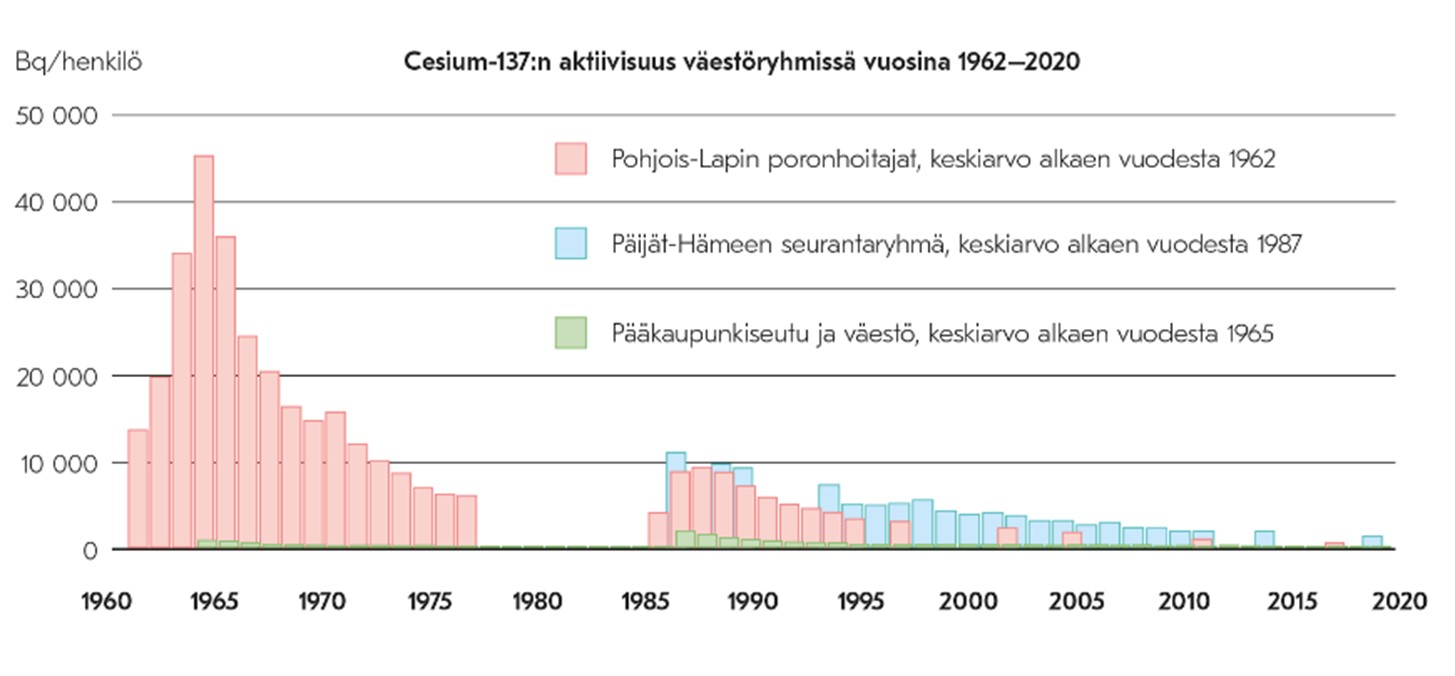Determination of radioactive substances in the body
The most important method for determining radioactive substances in the human body is direct measurement with the whole-body measuring equipment. During this measurement, radioactive substances are determined by radiation detectors outside the body – nowadays by semiconductor crystals.
Direct and indirect methods
Direct measurement methods can only detect substances that emit gamma rays. The energy of the radiation must be so high that the radiation is not completely left in the body, but part of it gets outside the body and can therefore be detected. The most important measurement method to determine the quantities of radioactive substances present in a body is gamma spectrometry measurement taken directly from outside the body.
It is based on the detection of gamma rays emitted by radioactive substances in the human body. The human is not exposed to radiation in the measurement. In addition to the radioactivity of the whole body, direct measurements can also determine the amounts of radionuclides contained in various organs. For example, the amount of radioactive iodine in the thyroid gland can be measured with designated detectors.
Indirect measurement methods are used when radionuclides in the body cannot be detected by direct measurements. For example, due to the short range of alpha and beta radiation, the quantities of radionuclides emitting these types of radiation cannot be measured directly from humans. These include strontium-90 and tritium. The resulting exposure can be determined by measuring the activity concentrations of secretions.
When using indirect methods, the assessment of the amount of radioactive substances in the body must be done with the help of models describing human metabolism. The estimation always involves a higher degree of uncertainty than when using direct measurement methods.
If radioactive substances are widely spread in the living environment, for example, as a result of an accident, the amounts received by the population can also be estimated indirectly by analyzing the radioactivity of food and respiratory air. This method is best suited for estimating the amount of activity received by large groups of people.
Population measurements in Finland
In Finland, direct gamma spectrometry measurements have been used since the 1960s to monitor the radiation exposure of the population. Measurements have been used to monitor the elimination of radioactive substances originating from nuclear weapon tests or the Chernobyl nuclear power plant accident from the human body.
In addition to the exposure of the general population, the exposure of groups whose diets contain an exceptional amount of caesium-137 is also assessed. Such groups include, for example, people who eat a lot of reindeer meat as well as those who live in the area most affected by the Chernobyl fallout and also eat a lot of local natural products.
The radiation exposure caused by the Chernobyl accident is currently less than 1% of the average annual total dose received by Finns. In total, the Chernobyl fallout has been estimated to accumulate a radiation dose of about two millisieverts throughout life. This is about half of the average dose received from radon in the room air during one year.

The activity of caesium-137 in groups representing the population of the Helsinki Metropolitan Area and reindeer breeders in Northern Lapland as well as in a group that eats a lot of natural products in Päijät-Häme. Prior to 1986, cesium originated from the long-range deposition of atmospheric nuclear explosions. The elevated caesium-137 activity in reindeer breeders is due to the fact that the food chain lichen–reindeer–human efficiently enrich cesium and the high proportion of reindeer meat in the reindeer herders' diet. The measurements of reindeer breeders in Northern Lapland have been carried out in co-operation with the Radiochemistry Laboratory of the University of Helsinki.
The figure above shows how the effect of nuclear weapon testing performed in the atmosphere differs from the effects of the Chernobyl accident. The fallout from nuclear weapon testing, received over a longer period of time, was distributed evenly throughout Finland, but there is a big difference in the results between the Helsinki group and the reindeer breeders in Lapland. The difference is due to a different diet. In the rugged nature of Lapland, the lichen–reindeer–human food chain is a strong enricher of cesium. The fallout from Chernobyl was shorter and unevenly distributed. Lapland and the population-rich Capital Region received the lowest amounts. The Päijät-Häme region received more fallout and the radiation exposure of heavy users of natural produce in the region is higher than the exposure of people living in other parts of Finland. However, in Finland as a whole, the radiation dose resulting from the Chernobyl accident constitutes a very small percentage of the total annual dose.